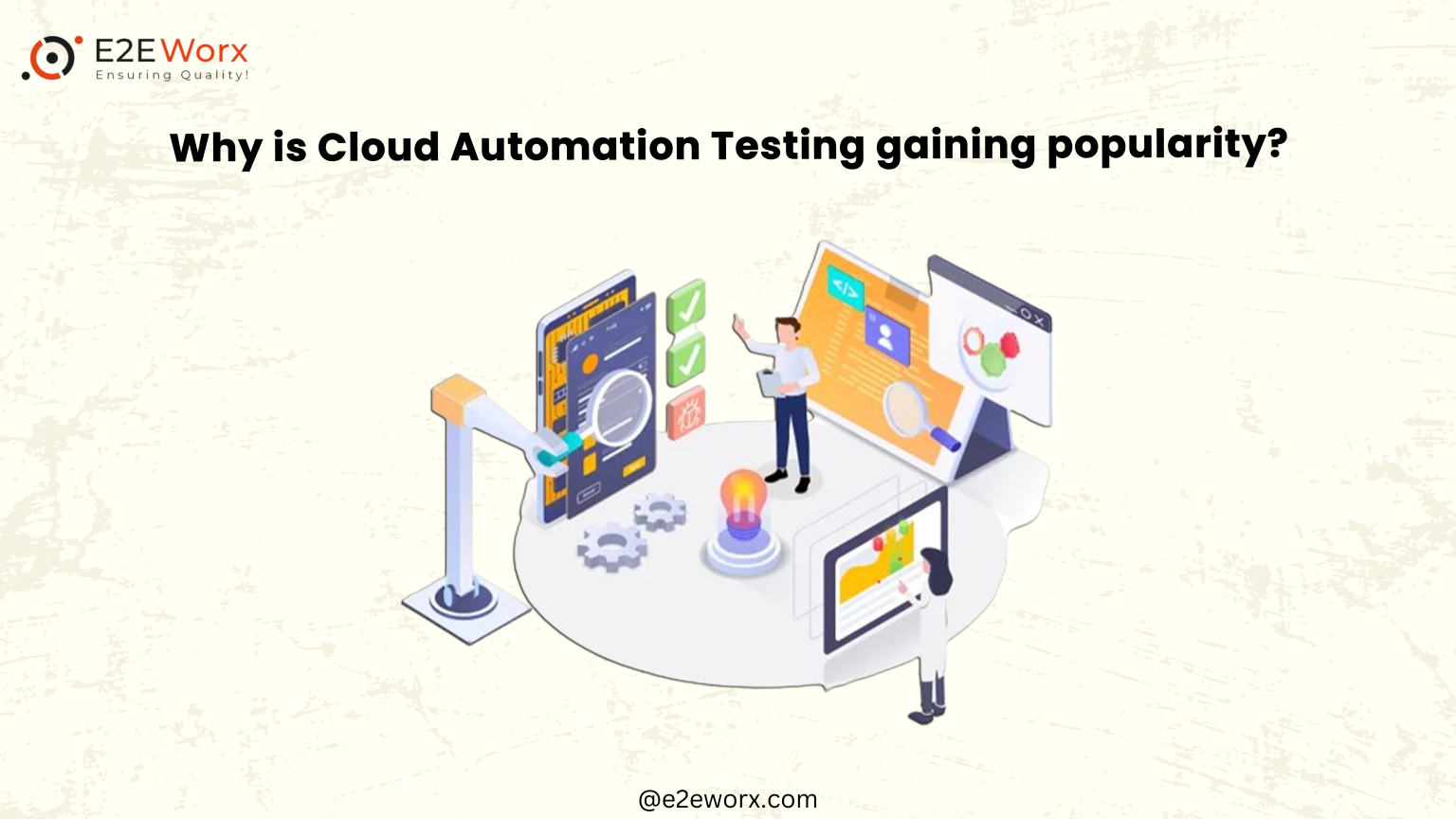
Cloud Automation Testing, as an advanced iteration of test automation, gaining supremacy in the current landscape. DevOps relies heavily on test automation to automate tedious testing tasks. Besides, it frees up software development teams for more innovative work.
Moreover, as more and more businesses migrate to the cloud, cloud-based automation provides significant opportunities for SDLC testing to advance.
This article provides comprehensive information regarding cloud automation testing and its benefits. Let’s start by having an in-depth look at what cloud automation Testing is.
What is cloud automation Testing?
CAT basically involves using automated testing tools in a cloud-based environment. This approach helps to execute test cases and validate software functionality.
By leveraging the scalability of cloud platforms, this approach enhances efficiency and flexibility in software testing. Besides, it drives it into a crucial component in modern development practices.
Why is cloud testing considered a strategic initiative?
Cloud testing is regarded as a strategic initiative for several compelling reasons.
- Firstly, It offers unmatched scalability and flexibility that enable organizations to dynamically allocate resources based on testing needs.
- The scalability ensures optimal resource utilization, cost-effectiveness, and the ability to handle varying workloads.
- Secondly, cloud testing facilitates collaboration among distributed teams. Teams can cooperate by enabling access to testing environments from anywhere in the world.
- Moreover, it provides an ease for managing testing infrastructure in the cloud which reduces the time and effort required for setup and maintenance.
- Cost efficiency is another significant factor. Besides, cloud testing supports the testing of applications under real-world conditions. This ensures that applications are robust, reliable, and capable of handling various scenarios.
Visit: What is Security Testing? Security Testing Tips For Beginners
Benefits of Cloud Automation Testing
Cloud Automation Testing delivers numerous benefits to organizations, enhancing their Software Quality Assurance Services. Let’s delve into the compelling benefits that CAT brings to the forefront, shaping the future of software testing practices.
- Scalability and Flexibility
Cloud Automation Testing offers unparalleled scalability, allowing organizations to dynamically allocate resources based on testing needs. - Resource Optimization
Using cloud resources helps organizations optimize usage, cutting costs and improving resource management. - Streamlined Testing Processes
Cloud Automation Testing makes testing easier and faster by reducing manual work and speeding up the testing process. - Robust Applications
This method plays a crucial role in enhancing Software Quality Assurance Testing Services by ensuring the robustness of applications. - Modern Development Demands
Using Cloud Automation Testing helps organizations keep up with modern development needs by offering different testing setups and configurations. - Cost Efficiency
Businesses can save money by using a pay-as-you-go system. Instead of paying a lot upfront for infrastructure, they only pay for what they use. - Global Accessibility
Testing in the cloud lets teams work together from anywhere in the world, making it easy for them to collaborate. This also makes testing more flexible and faster overall.
Types of testing that are performed on cloud
Testing in a cloud environment, taking advantage of its flexibility and scalability, encompasses various types. Some prevalent ones are:
- Regression Testing
Ensures that recent updates or changes haven’t disrupted existing functionalities. It verifies compatibility, scalability, data integrity, and cross-platform functionality, allowing development teams to maintain application reliability. - Web-based application testing
Ensures seamless functionality, performance, and security. It involves assessing compatibility with different browsers and devices and validating data security in the cloud. Besides, ensures overall performance and scalability. - Exploratory Testing
Exploratory testing for cloud applications involves dynamic, on-the-fly examination to uncover issues. It adapts to the unique aspects of cloud environments, helping ensure robust functionality, security, and performance. - Functional Testing
Verifies that the software’s specified features operate correctly in the cloud environment, ensuring seamless performance and meeting defined requirements. - Performance Testing
Evaluating the system’s responsiveness, speed, and overall performance under different conditions. - Non-invasive Testing
Non-invasive testing assesses system aspects without disrupting its normal operation. Additionally, it is useful in scenarios where system changes are impractical or where observation is the primary objective.
Conclusion
CAT is gaining popularity due to its transformative impact on software quality assurance testing services. Its scalability, flexibility, and diverse testing capabilities make it a strategic choice for modern development.
Embracing Cloud Automation Testing is essential for optimizing resources and ensuring efficient and reliable software outcomes in the evolving landscape.
